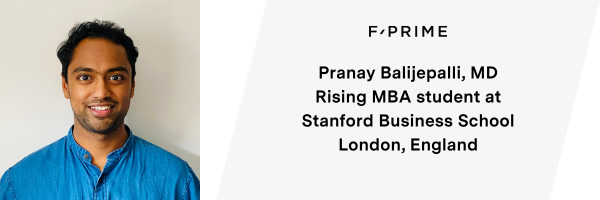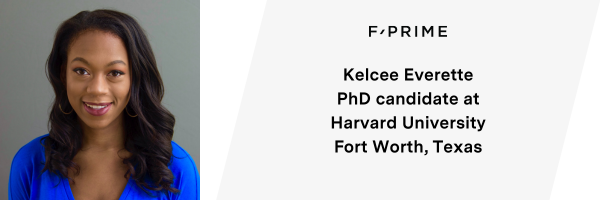Xaira Therapeutics is an integrated biotechnology company driving advances in artificial intelligence to learn the language of life and transform how we treat disease. The company seeks to rethink the drug discovery and development process from end-to-end by bringing together leading talent across three core areas: machine learning research to better understand biology, expansive data generation to power new models, and robust therapeutic product development to treat disease.
Sector: Healthtech + Services
HiLabs
HiLabs is a leading provider of AI-powered solutions to clean dirty data, unlocking its hidden potential for healthcare transformation. HiLabs is committed to transforming the healthcare industry through innovation, collaboration, and a relentless focus on improving patient outcomes.
Behind the Build: Q&A with Meena Mallipeddi, AmplifyMD
Raised in families immersed in the healthcare field, Anand Nathan and Meena Mallipeddi, husband and wife Co-founders of AmplifyMD, are no strangers to the limitations faced by many doctors today. “Coming from families of doctors, we’ve watched frustrations grow when physicians are not able to practice medicine and deliver patient care in the way they had hoped,” said Mallipeddi. She noted one key shortcoming is a lack of timely access to specialist expertise, which prevents patients from obtaining the care they need when they need it.
Access to specialist physicians in the U.S. now largely depends upon a person’s zip code, Mallipeddi pointed out, and this access disparity impacts hospitals, patients, and their communities. As a result, most hospitals in the US experience unnecessary transfers, prolonged hospital stays, excessive utilization of tests and diagnostics, and increased healthcare costs. Outpatient services also struggle with issues like patient leakage, avoidable readmissions, and delays in care, which all exacerbate the clinical and financial burdens on the healthcare system.
Determined to solve the glaring supply and demand gaps they consistently observed, Mallipeddi and Nathan set out to redefine how hospitals, clinics, and patients access specialty care. Mallipeddi explained, “Hospitals and health systems have been trying to solve the specialty shortage issue with telemedicine for years, but they haven’t been successful in their current piecemeal approach. Until recently, virtual care has been a glorified video call. But it must be so much more if we want a seamless experience with broad adoption and impact. The technology must integrate bi-directionally with the EMR (electronic medical record) and the health system’s existing clinical workflows. Just as important, it’s got to be incredibly functional and efficient for a remote provider to see patients across multiple systems without a million different logins and applications for them to wade through. Anand and I knew we had to offer something smoother, better, and faster so medical facilities and providers could use the technology to its full potential.”
And so Mallipeddi and Nathan created AmplifyMD, a next-level virtual care platform that took into account the pain points above and gave hospitals a built-in multi-specialty physician group to simplify access to specialist services. “By developing a network of providers alongside our fully integrated virtual care platform, we can support hospitals, health systems, and clients of all sizes in a way that hasn’t been done before.”
What motivated you to start AmplifyMD?
My husband, Anand, and I have backgrounds in healthcare and technology, and were constantly exposed to the firsthand frustrations of our family members who are medical professionals.
The recurring narrative we encountered was the limitations caused by their lack of access to specialists. This often led to unnecessary patient transfers, excessive testing, and, at times, suboptimal care, all because a clinician lacked a piece of critical information or a consultation from a specialist. Recognizing that knowledge in medicine is highly shareable with the right technological infrastructure led us to the founding of AmplifyMD.
What have you learned along the way from “peers” in the field, and how is AmplifyMD different?
Most of our learnings were around the need to develop a comprehensive solution versus a narrow focus on only the clinical or technological aspects of virtual care. Hospitals are seeking a holistic solution, and the fact that we offer 15 different specialties through one platform, across any device, use case, or clinical care setting is so key to them. Our approach also minimizes their need for the myriad point solutions they struggle to manage today, helping our clients achieve operational efficiencies they otherwise would never have managed. It’s one training, one integration, and you’re done. That has been huge for us.
What makes you most hopeful about AmplifyMD’s future?
It’s hearing the impact we are making on patients, providers, and hospitals each day. I was just visiting one of our clients the other week, and the CEO was raving about our doctors and how much she loves having them on staff. And it wasn’t only because of the impact they were making directly on patients by seeing, treating, and discharging them efficiently. It was also because they’d simultaneously lowered the burden on her in-house hospitalist team. Her staff is keeping and treating more complex patients on-site with more confidence, and we’re helping the hospital as a whole run at a higher level of performance.
That’s just one story, and it might seem minor compared to the more dramatic tales of life-saving consults we do every day, but it’s precisely these everyday successes that illustrate the profound effect we’re having on healthcare in America. Our ability to efficiently address common health issues, which traditionally might have led to prolonged hospital stays and escalating costs, showcases the potential of AmplifyMD and “virtual care done right” to streamline and improve patient care and healthcare outcomes.
F-Prime has played a pivotal role in our journey, particularly through the support of Carl, who has been instrumental in expanding our network and enhancing our credibility. Carl’s willingness to share his extensive contacts has opened doors for us, connecting us with key figures in the healthcare industry, fellow founders, and potential investors. These introductions have been invaluable in fostering relationships and building a solid foundation for future collaborations.
What’s been the most rewarding part of your tenure with AmplifyMD to date?
Witnessing our remarkable growth and the impactful milestones we’ve achieved. Our team has more than tripled in size over the past year, which just blows my mind.
Equally exciting is our leap in patient care, from serving 10,000 to over 50,000 patients annually. Currently, we collaborate with over 150 clinical sites and offer services in more than 15 specialties, supported by a robust medical group nearing 300 doctors. And we recently launched tele-stroke in our suite of specialties, with 100 activations in a mere two weeks, which marks another significant achievement. This exponential increase underscores our expanding capacity to make a real difference in patients’ lives daily.
From the foundational days of brainstorming ideas to reaching these milestones, the journey has been a testament to our collective effort and dedication. Witnessing these achievements unfold has been profoundly rewarding, and our team’s ongoing shared commitment to our mission continues to make AmplifyMD incredibly fulfilling.
How would you describe your leadership style?
Fundamentally, I am driven by results, and hold a firm belief in setting ambitious targets. The essence of my leadership involves not just setting ambitious goals, however, but also ensuring that the team believes in their ability to meet them. I see a crucial part of my role as inspiring and instilling confidence in my team, convincing them of what we can achieve together. Otherwise, I’d never have gone into the start-up world!
I’m also always very direct and transparent, a firm believer in giving credit where credit is due, but also in calling out areas for improvement as soon as they become apparent. Celebrating a job well done is just as critical to our team’s continued success and morale as making sure everyone knows we are all being held to the same high standards. We’re all in this together, everyone is giving it their all, and I think the more our employees see this in action, the tighter it makes us as a team.
Who is the one person who’s had the most professional impact on your career, and why?
That one’s easy: my co-founder and husband, Anand. As a husband-and-wife team, our dynamic is unique. Anand not only conceived the initial idea and vision for our company, but he also brings a level of empathy to our partnership that complements my more results-driven approach.
His extensive experience as a people leader has been instrumental in shaping our company’s internal culture. Anand excels in managing our team, effectively communicating our vision, and fostering a collaborative environment. His ability to provide unwavering direction and product guidance for the company and our platform has kept us at the forefront of the industry and helped us build a clear defensive moat around our offering. The balance between our skill sets allows him to focus on the internal operations of our company while I take on the external challenges.
Anand’s impact extends beyond professional guidance. He provides unwavering support during challenging times, and we rely on each other for strength. This mutual support system has been a cornerstone of not just our personal relationship but our professional success as well. Moreover, his ability to offer candid feedback whenever necessary has been invaluable in maintaining our focus and integrity throughout our journey.
‘By developing a network of providers alongside our fully integrated virtual care platform, we can support hospitals, health systems, and clients of all sizes in a way that hasn’t been done before.”
— Meena Mallipeddi, Co-founder & CEO of AmplifyMD
The Four Ds of Digital Health
In the dynamic landscape of healthcare’s digital transformation, where data access, timeliness, and quality are paramount, a fresh framework emerges: the Four Ds of Digital Health
Unlike conventional stakeholder-centric models, the Four Ds zero in on the essential functions individuals seek from healthcare: accessing the right mix of professionals, medications, and tests. However, a glaring obstacle obstructs progress: the sorry state of healthcare data
A student of mine in my side hustle as an adjunct lecturer once created “Four Gs” related to her academic project; humorously, she called it “a business school approach to remembering things.” In that spirit, I’ve been thinking about how best to encapsulate and frame the role of data access, timeliness, and quality as we collectively reshape healthcare as a digital-first industry.
Hence, I’d like to propose the Four Ds of Digital Health.
Before diving in, it is worth reflecting on the services we all enjoy daily that are only possible with accurate, up-to-date data. Like many frequent travelers, I often use the Uber, Starbucks, Orbitz, and HotelTonight apps. None of these services could function without accurate information about the “state” of location (Uber), inventory (Starbucks*), pricing (Orbitz) or quality (Hotel Tonight). Most of these apps and many others we use in our daily lives need real-time, accurate data about all of those elements. Some, such as Starbucks, are closed systems that will not let you know that another coffee shop is closer to you, while others are more like the more open marketplaces (e.g. Amazon) we have come to love: but at least they all are predicted on accurate, realtime data.
In healthcare by contrast, there is not reliable, up-to-date information about basic things like the address of a medical group, the status of a hospital or its on-staff doctors with respect to a provider network, the medical history of a patient, or the status of a health plan deductible. This is even true in closed systems like Epic where some health systems can’t seem to get out of their own way. Simply put, we cannot build services that improve the quality and cost of healthcare — thereby expanding access — without solving the sorry state of healthcare data.
Getting to the 4 Ds, I was tempted by other alliterative quartets. Often used is the four Ps of healthcare: patient, provider, plan, and pharma. That works, but it speaks more to the stakeholders than to the “jobs to be done”. I flirted with four As: access, automation, artificial intelligence, and accountability, but it felt too abstract.
Hence, I offer 4 Ds that are mutually exclusive and collectively exhaustive, while also upgrading DATA to the central role it deserves:
– Doctors (by which I include all care providers overseen by doctors, with everyone “at the top of their license” or the hospitals in which doctors do procedures)
– Drugs (including both the benefit from PBMs and the delivery from pharmacies)
– Diagnostics (labs, imaging, etc.)
– Data (which you could argue is orthogonal to the others, but as mentioned above needs to be treated as a key pillar, so I’m bending the framework accordingly)
By the way, you may say these also are not “jobs to be done”. That is true, but they are closer to that framing because what people really want to “get done” in healthcare is to stay well and address problems; this means they need the right mix of doctors, drugs, and diagnostics. What stands in their way are the myriad process breakdowns we all have come to accept driven by health plan bureaucracy, provider ineptitude, and related technology breakdowns; as well as the (criminal) conspiracy that is our incumbent PBM model. If you are sick, if you are managing a chronic condition, or if you merely seek to access preventative care, you are in the market for a doctor, a drug, or a diagnostic.
What makes all of this so frustrating is that our data model (our 4th D) is broken. Our data is siloed and often inaccurate; and few of the participants in the industry are interested in changing that. Remember when the Cures act opened up health data access and Epic took out a full page ad to explain to Congress why this would undermine quality? Ever notice how payers and providers treat “price” like a national security secret? Some have openly speculated that payers want provider data to be opaque, so that they can field “ghost networks” that meet network adequacy requirements in a phony fashion (I don’t share this view, but I empathize with those who wonder how we can easily access the hours of the deli down the street on our phones and yet major payers seem unable to provide accurate street addresses of the providers in their networks).
Innovation comes from clinicians, technologists, and business people working together to improve the processes by which people access the 4 Ds. With the advent of AI, it is now every more clear that the promise of value based care models, patient-centric care management platforms, and improvements to administrative cost all hinge on data quality improving dramatically. And, fittingly, the data we need improved relates directly to the other three Ds and deserves a full seat at the table.
– Doctors: We have “hacks” to access doctor’s (or some of doctor’s) schedules from early innovators like ZocDoc, but few solutions actually expose the inventory of provider time to the world for use and scrutiny, and the availability of “cash pricing” is scarce. New companies offering provider data APIs hold promise, but solutions also need to be adopted within the enterprise to ensure that provider data is accessible, actionable, and accurate. We need more than just online booking; we also need to know details about provider services and quality. Even more importantly, we need to know the PRICE of services, so patients (or doctors who navigate their care) can see what things actually cost. In short, we need a HotelTonight for medical care. We need doctors to simply explain what they need to be paid per hour (or, if you want to be fancy, per RVU). We should just cut to the chase: 15 minutes with an internist should cost about $100; a specialist should cost about twice that; NPs should be at least 25% less. If we just cut through the morass of “visit leveling” and modifiers, we can acknowledge that what we have is a broken marketplace for provider time. We should be able to expose the schedules and the prices, a la HotelTonight. Providers take home about half of the top-line today due to administrative bloat; with innovation those costs can come down, potentially reduction actual costs.
– Drugs: Anyone who has stood in front of the CVS counter with a doctor on one phone line and the PBM on the other knows how maddening it is to sync up the various parties who control the distribution of drugs. Again, there are “hacks” such as drug discount cards and related services like GoodRx, but what we need is a fundamental redesign. PBMs who talk about “average wholesale price” are disingenuous at best. Platforms like CapitalRx represent infrastructure to change the game and link prices to proper reference data. Some disrupters also are promoting the potential of biosimilars, which also would reduce cost if they didn’t eat into the profits of the PBM rebate game. PBMs also make a killing on generics where market forces should permit patients to pay the real costs of those medications. In short, by exposing data about what these medications really cost, we can begin to present tradeoffs to providers and patients who increasingly need to focus on budgets for care.
– Diagnostics: In some areas, we have achieved scaled low-cost tests, as with bloodwork at the national chains. In other ways, the data monopolies of health systems inhibit a real market from developing for services like imaging. Most people know of times when the big health system implies or states outright that they can’t look at images created outside their four walls. Similarly, patients often need to resort to “sneaker net” to carry images on CDs or as films. This is nuts and it’s wrong that health systems we are supposed to trust will not enable use of imaging that would cost dramatically less if done in a place that doesn’t have primates in the basement. What is missing here is a data network that can disentangle the imaging from the radiology reads. It is illegal to require patients to use only your own services and with data liberation we should be able to put an end to such misuses of market power. With a surge in new diagnostic possibilities, from genetic tests to cancer biomarkers, diagnostics also will need to yield to the power of platforms and markets to reveal price and other tradeoffs so the health fiduciaries out there can make better decisions in the interest of patients.
Which brings us back to data. If our health data was plentiful and portable, we could simplify the way we pay providers, rationalize the drug payment model, and open-up a marketplace of diagnostic solutions that would cost much less than what we pay to oligopoly health systems. Yes, data runs orthogonally to the other three Ds, but by giving it its own space as another “D” we can begin to rationalize and push the other three Ds to move forward. Providers, payers, pharma and diagnosticians would love to sit on the data and mete it out if and when it suits their interests; but we all would benefit dramatically more if data were open so the innovators can do their thing.
So, how will we get there? A hopeful data roadmap would include regulation to require data sharing with patients and providers (and crack down on market power abuses), development of data utilities and related APIs, and enterprise solutions to bring payers, providers, and pharmacies kicking and screaming into a modern data model. We also need marketplaces that make the cost and quality of doctors, drugs, and diagnostics crystal clear to those who control health budgets and to patients who increasingly have their own funds to allocate. As with the innovation we have seen in other areas of our lives, if we can focus on and fix the last D, data, we can unlock a new era of enhanced services at lower costs across the other three Ds.
And what does this have to do with digital health? Everything. We already have the ability to care for people across state lines via telemedicine, route patients to lower cost care settings, and leverage AI to find insights and solutions at a dramatically lower cost, IF the regulators permit it and the data is at hand. Innovators and their investors are ready to go and already are making a dent in these problems. And/but, if those sources of creative destruction had better data that was more fluid, more accurate, and more actionable, the innovation and improvement in our health system would be dramatic and profound.
So, let’s embrace technology and clean-up our data act.
Our health depends on it.
Quantum Circuits
Quantum Circuits, Inc. (QCI) was founded in 2015 with the goal of developing, manufacturing and selling the first practical and useful quantum computers based on superconducting devices. QCI was founded by pioneers in quantum devices and information processing from the Department of Applied Physics at Yale University. Their group has produced many scientific firsts, including the development of a “quantum bus” for entangling qubits with wires and the first implementation of a quantum algorithms and error-correction with a solid-state device.
Cameron Raglin
Cameron Raglin is an Associate at F-Prime, focusing on early-stage investments in healthcare technology and services companies. Prior to joining F-Prime, Cameron was a Consultant at Bain & Company, where he advised healthcare Private Equity transactions and business strategy for Fortune 100 healthcare and technology companies. He also served as a Senior Analyst at Twist Bioscience, focusing on corporate strategy, business development, and company operations.
Cameron holds a B.A. in History from Amherst College, with a minor focus in Physics and Pre-Medicine.
Behind the Build: Q&A with Stephen Smith, NOCD
Colored by his own experience with OCD, Stephen Smith helped create NOCD, a digital health startup to address this chronic and severe psychiatric condition that affects one in 40 people, which is over 180 million people globally.
NOCD is dedicated to helping people with OCD and related conditions receive effective, affordable, and convenient treatment. Therapy is delivered through a virtual platform, which offers members live video sessions with a licensed therapist who specializes in Exposure and Response Prevention (ERP) therapy –the gold-standard treatment for OCD. The platform also offers interim support between sessions from peer communities and self-help tools. It’s a model that Smith wishes he had access to when he was first navigating the disorder.
Smith explained, “I realized that my journey with OCD sadly was the norm, not the exception, and it didn’t have to be that way, considering how effective ERP can be for most with the condition.” In ERP therapy, an individual is encouraged to confront the stimuli that trigger distress related to their obsessions, while also resisting the urge to perform compulsions to reduce that distress.
As the success of ERP often depends on consistently practicing exposures outside of therapy sessions, Smith identified that “the problem was operational in nature, not clinical, which meant it could be solved.” That was the catalyst for the inception of NOCD, and an on-demand platform was developed to identify, engage, and manage people with OCD more effectively, affordably, and conveniently.
What motivated you to start NOCD?
I didn’t start experiencing severe OCD symptoms until I was a sophomore in college. Prior to my OCD onset, life was great. I was playing quarterback at a small university in Texas, doing very well academically, and thriving socially. However, my life changed on a dime once I returned home to the Chicagoland area for summer break. One evening, I started having strange fears that made me question my core values and character. Unlike other fears that naturally went away over time, these were different. They felt stuck in my head, and the harder I tried to make them go away, the worse they became. Because I didn’t realize that these were hallmark OCD symptoms, I sought help from a generalist psychologist in my area. He misdiagnosed and mistreated me, teaching me strategies that weren’t just ineffective but were harmful in retrospect. I got worse and saw several other providers who similarly misdiagnosed and mistreated me, causing me to become constantly distressed, develop severe depression, halt my football career, leave school, and eventually become housebound.
While housebound, I spent most of my time compulsively searching Google, to disprove my recurring, unwanted, fears and relieve my debilitating anxiety. This put me in a position to find a forum for other people going through the same experience. They defined their symptoms as OCD and shared how they regained their life by doing ERP Therapy. I felt like I had a breakthrough and immediately searched for ERP Therapy. That’s when I ran into a whole other set of barriers: There was only one licensed therapist in my area who specialized in ERP, and it cost over $300 per session to work with her. Moreover, she had a seven-month waitlist, preventing me from getting help even if I could find a way to pay for the care. It was a disaster, but a family member helped me eventually get off the waitlist, cover the cost of the treatment, and see the provider. The experience completely changed my life. The ERP specialist diagnosed me with OCD, started me on ERP Therapy, and helped me see transformational results after only a handful of months. The progress allowed me to eventually return to school, restart my football career, and finish my degree. While at school, I had an opportunity to reflect on my journey, ultimately forming my vision for NOCD.
What differentiates NOCD from other telehealth providers in the industry? In what ways have you achieved success where others in the field have fallen short?
NOCD is the only OCD-specialty provider in the industry that accepts insurance for over 140 million Americans in all 50 states and has a wait time of less than 7 days on average. Further, we offer care that is a hybrid of “tech and touch,” an integrated treatment experience that helps people not only during sessions, but also between sessions when their therapist isn’t available. Consequently, in the largest peer-reviewed OCD treatment study ever conducted, NOCD Therapy was proven to drive significant reductions in OCD severity in half the amount of time than standard ERP Therapy.
What’s been the most rewarding part of your tenure with NOCD to date?
One of the most rewarding parts of my tenure with NOCD is seeing the outcomes we generate for our members, particularly their personal anecdotes because they are a testament to the profound impact of our efforts. OCD can feel really isolating and we make it a priority to bring together the OCD community so that no one feels alone. Also, it’s been very rewarding watching several people on our team develop professionally over the years. We’ve had people who joined the company out of college who are now directors or VPs. They’ve flourished here, and they’ll be able to work anywhere they choose down the road.
How would you describe your leadership style?
Although my sports background makes me competitive, I pride myself on being involved. My style is to form strong relationships with people on our team at all levels, so I can ensure they feel happy, healthy, and properly supported. I try to lead by example and push the tempo operationally, so people can be in a situation that allows them to achieve beyond their personal expectations and move mountains in the industry.
What’s one lesson you’ve learned so far as Co-Founder and CEO?
As Co-founder and CEO, there comes a time when the success of the company is completely based on how well key people in the company perform. Therefore, it’s up to me to not only find excellent talent but also to groom and develop talent.
What does the future look like for NOCD?
F-Prime has been crucial in helping my team and me understand how to scale NOCD in such a way that it withstands the test of time. We have “product-market fit,” with patients, providers, and payers, so now we’re focused on efficiently scaling to reach millions of people globally in need of evidence-based care.
Our company is excited about the opportunity to scale with partners who are interested in identifying people with OCD and related conditions. For instance, we would like to make at least one preferred psychiatrist partner in each U.S. state that we serve, to allow us to expand medication management operations. We don’t offer medication management services, for context. Seeing our members get better makes me most hopeful about NOCD’s future—many of them not only experience life-changing outcomes but sometimes even life-saving outcomes.
What’s the best piece of professional advice you’ve ever received?
Build a product that people don’t just like, but love. It is the key to building a generational company. We take that advice seriously every day at NOCD.
Subscribe to our newsletter to get the latest updates on how our portfolio companies continue to lead the way in their respective fields.
Julia McDowell
Julia McDowell is a Venture Partner at F-Prime focusing on healthcare strategy, operations, and business development. She has committed her career to improving healthcare quality, access, cost, and experience. Most recently, Julia led the complex care delivery business at Galileo, Inc, a risk-bearing provider, serving Medicare and Medicaid patients at home, in the community, and virtually. Previously, Julia was Sr. Director of HealthHUBs at CVS Health, leading commercialization strategy, new product opportunities, and consumer experience for care delivery in CVS stores. Early in her career, Julia delivered public health programs all over the world, including starting and leading the Clinton Health Access Initiative’s first family planning program.
Julia is a former Fulbright Fellow and holds an MBA from Yale University as a Frederick Frank Fellow, an MPH from Emory University as a Woodruff Fellow, and a BA with honors from Brown University. She serves on multiple non-profit boards including Planned Parenthood of Southern New England, Inc. and Social Enterprise Greenhouse.
F-Prime’s Summer Internship Program: Meet our 2023 interns and fellows
Thank you to our interns and fellow for their contributions this summer and for choosing F-Prime!
This summer, F-Prime was thrilled to welcome a talented cohort of interns and fellows to our Cambridge and London offices to help with competitive landscape analysis, sourcing, founder calls, and more. Read on to learn what it’s like to join our internship program.

“I have been able to explore new thematic areas in which the team was still building its knowledge base. By getting deep into the science and innovation through meeting entrepreneurs and academics, I have added to the team’s thinking and identified potential plays which culminated in presentations to the partners. A special shout out to Ana and Martin for the mentorship and support over the summer!”

“My time was split between assisting with an ongoing deal — leading a summer exploration project — and taking part in meetings with potential investments. I’ve had a great time in all of these activities, but I particularly enjoyed being an integral part of a deal team. Between self-guided research into standards of care, calls with key opinion leaders, diving into the relevant primary literature, and doing some basic market forecasting, I was able to leverage the clinical and research training I’ve received and develop so many new skills along the way.”

“I have been researching the biotech landscape of foreign markets and performing due diligence on interesting licensing opportunities abroad. I have also participated in many introductory and follow-up meetings with prospective US-based companies, where my research expertise and previous work experience have been invaluable in helping me evaluate each opportunity. I’ve learned a lot throughout the summer and was able to connect with people at all professional levels and across disciplines. One important skill I’ve been able to develop during my time at F-Prime is learning how to become versed in a new area of science within days, which is quite different from my Ph.D. experience of developing deep expertise in one area over many years.”

“I joined the F-Prime/FBRI team primarily due to the invaluable opportunity to collaborate with individuals deeply committed to fostering and accelerating my personal learning and professional growth. Although it is a lean team, I am fortunate because it translates to more one-on-one attention. I am getting opportunities to actively participate in diverse projects that make me feel valued as an individual, and that my contributions are noticed and appreciated (even as an intern!).”

“I was drawn to F-Prime because of the learning culture at the firm. I wanted to play a role in the translation of good ideas into real medicines and the firm has amazing people doing exactly that. On virtually every topic I encounter, there is a resident expert at the firm who can help me in framing my thinking. This ability to get to the right answer faster makes everyone more productive.
I also want to highlight that the deals the firm sees are a function of its reputation. People want to invest with F-Prime because they know they’ll not only receive capital but also an engaged partner who can help them along the trajectory of the company. This means that we see some of the most interesting ideas that will shape the future of medicine and often get to take part in their realization.”

“One of the exhilarating projects I’ve been involved in is the thematic research on Gen AI x Fintech. The possibilities with breakthrough technology like Gen AI are awe-inspiring. I find it fascinating to delve into its potential for the future and hear how visionary entrepreneurs contemplate disrupting the financial services landscape. It’s been an incredible journey so far, and I’m eagerly looking forward to sharing the outcomes of our research.”

“I have always planned to spin out my PhD research but had no idea how VCs actually decide to fund these projects. I joined to learn how other spinouts and startups pitch to VCs and learn about the decision processes that VCs make.”
Applications for 2024 are not open yet, but if you are interested in learning more, please send an email to careers@fprimecapital.com.
Why We Invested in Carrot Fertility: A global leader in fertility healthcare and family-forming
Women are half of the world’s population and 80 percent of healthcare consumers, yet efforts to fund women’s health have been marginalized time and time again. In recent years, growing recognition by industry decision-makers has emerged on the varied health challenges faced by women, including increasing demand for fertility services.
While women’s health encompasses vastly more than fertility-related events, the fertility market is much larger than what many people recognize. A recent report from the World Health Organization states around 17.5% of the adult population – one in six people worldwide – experience infertility. The data shows that the market is large and growing. According to the CDC, there were nearly 370,000 assisted reproductive technology (ART) cycles completed in the U.S. in 2021, a 19% increase from 2020.
Enter Carrot Fertility, the leading global fertility care platform enabling employers to offer a highly flexible benefit to support employees in the “pursuit of parenthood” through financial support, care navigation, and provider access.
Tremendous Unmet Need: Traditional healthcare benefits often do not cover family-building.
The fertility and family-building benefits market is accelerating because of favorable demographic and economic trends. Families are having children later in life than they did previously, driving increased interest in solutions for both men and women as they face the prospect of declining fertility. As a result, male and female preservation via freezing of sperm and eggs, respectively, has expanded rapidly.
Further, fertility providers no longer focus exclusively on a narrow demographic, broadening services to be more inclusive of diverse populations. For example, LGBTQ couples are increasingly forming families in ways that benefit from fertility support via surrogacy, assisted reproductive technology, and adoption services.
Tight competition to attract and retain talent at companies is also increasing driving greater attention to these needs, with more family-friendly benefits high on employers’ priority lists. The net result is a more inclusive range of services for everyone who faces fertility-related challenges.
A More Inclusive Solution: Carrot makes family-forming benefits accessible to all.
Many companies focus on spreading their benefits dollars widely, considering women’s health to be a general category alongside mental health, musculoskeletal care, diabetes care, and related “verticals.” The problem with this approach is that it conflates gender with conditions, whereas women’s needs are far more diverse, specific, and complex than can be served with a “women’s health” offering.
Carrot saw an opportunity to develop a compelling solution to a specific problem – fertility – and make it accessible for all, wherever those audiences may be in their fertility and family-forming journey. Fertility care is complicated, and connecting patients with providers and optimal care is just one piece to support them through many of the most meaningful moments of their lives.
“Patients are often left to make care decisions based on limited knowledge, which can lead to unnecessary treatments and poorer care experiences and outcomes. We saw a valuable, important opportunity to provide more women with both connections to care and educational resources to accompany care in order to allow them to make more informed choices.”
-Tammy Sun, CEO, Carrot Fertility
Carrot offers a more inclusive and exhaustive fertility-related benefit that covers all components of and paths to family formation.
- -Curated Care: Carrot’s substantive network of highly vetted providers enables patients to navigate care options based on their individual needs rather than a predefined, one-size-fits-all course of treatments – all backed by the support of an experienced clinical team.
- -Cost Savings: Carrot’s financial model enables an employer-specific contribution, rather than a limited benefit for specific surgeries (e.g., IVF), which provides companies with greater flexibility in their benefits offering while adhering to budgets. This allows Carrot to sit alongside patients to advise them about how to make the best use of each employer’s benefits offering.
- -Global Coverage: By offering benefits on a global basis, Carrot appeals to many buyers of these services who want to offer similar benefits to all employees regardless of their country of residence.
- -Every Person, Every Journey: Carrot offers evidence-based support for every fertility journey — fertility education, egg and sperm freezing, in vitro fertilization (IVF), pregnancy and postpartum support, gestational surrogacy, adoption, menopause, low testosterone, and more.
Carrot’s platform and wraparound services are already making an impact; quality data released in January 2023 show that Carrot customers had the highest reported single embryo transfer (SET) rate among fertility benefits vendors as well as an IVF pregnancy rate greatly exceeding national averages.
A Dynamic Duo: Founding team brings technology and clinical expertise.
Achieving “product-market fit” – or alignment of a product’s value proposition to an underserved market need – is critical to any startup’s success. Carrot Fertility’s two female co-founders, Tammy Sun and Dr. Asima Ahmad, MD, MPH, bring different yet essential competencies to the challenge of building a better fertility offering.
Prior to the founding of Carrot, Sun was head of partnerships at Evernote and personally experienced the limits of existing fertility offerings. In an MSNBC feature, she shared that at a doctor’s appointment, she found out she had “premature ovarian failure,” which meant that her ovaries were essentially getting older significantly faster than her biological age would imply — and that she would go through early onset menopause. Her co-founder, Dr. Ahmad, brought to Carrot her expertise as a clinical leader in infertility with a thriving medical practice as a reproductive endocrinology and infertility specialist at Fertility Centers of Illinois.
“When we met Tammy and Asima, we found a talented team with a compelling vision and business model for addressing a key gap in the industry faced by many patients and employers.”
-Carl Byers, Partner, F-Prime Capital
Future of Digital Health: F-Prime’s commitment to driving innovation.
Carrot’s mission to provide fertility care for all and its dedicated co-founders made F-Prime’s decision to invest in the company a straightforward one. In August 2020, we were delighted to invest in Carrot Fertility’s $24 million Series B funding alongside U.S. Venture Partners and existing investors including CRV, Precursor Ventures, Maven Ventures, and Uncork Capital. Later, we welcomed Orbimed and Tiger Global to the ongoing effort to enable success for Carrot and all of its stakeholders.
Like Carrot, our team and portfolio companies aim to reshape the healthcare system to address pressing challenges and enable everyone to access the care they need.
Subscribe to our newsletter to get the latest updates on how our portfolio companies continue to lead the way in their respective fields.